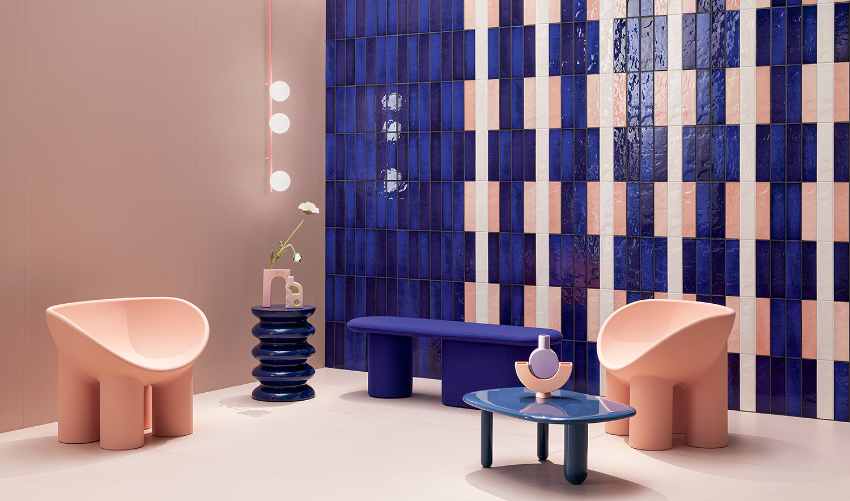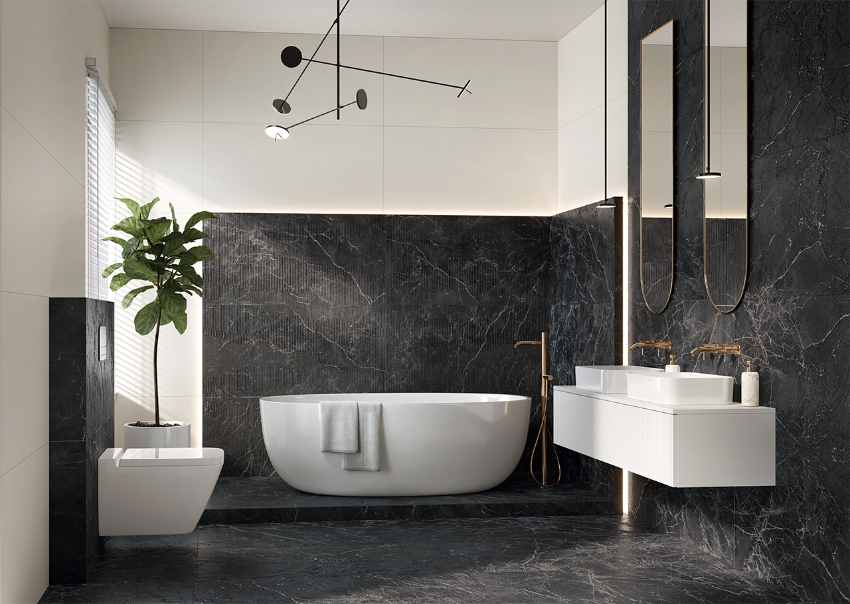Tubądzin Group is one of the largest producers of ceramic tiles in Poland. For over 40 years, they’ve been setting design trends in the industry. The company’s products are known for their global quality, which they achieve by using the most advanced technologies.
Tubądzin tiles are made from natural and noble raw materials, and they use dyes that are safe for both health and the environment. These tiles are versatile, serving not only in bathrooms but also as unique and durable furniture cladding and facade material.
Interview with Marcu George, Export Area Manager at Grupa Tubądzin.
What are the main areas of activity of the company?
Marcu George: Our core activities focus on the design, production, and global distribution of premium ceramic tiles. We collaborate closely with our trade partners, distributing our products through a network of major wholesalers who supply to smaller retailers. This model allows us to steadily grow our market presence. Currently, we are active in 80 countries around the world.
What’s the news about new products/services?
M.G: Last year, we launched the Tubądzin Meets Art project in Poland, aimed at democratizing art and providing patronage over it. As market leaders, we regularly collaborate with prominent figures in the fields of art, architecture, and culture. This year, we’ve already premiered the Masovia collection by Dorota Koziara, and this is just the beginning of what’s to come.
We are constantly advancing and discovering new uses for our porcelain tiles. Tubądzin porcelain tiles from the Monolith, Industrio, and Korzilius collections have been innovatively repurposed, offering a distinctive alternative to traditional façade materials. The Tubądzin Airflow System (TAS) facilitates the creation of both ventilated and adhesive façades, as well as roofing applications. Porcelain tiles applied to exterior walls with the TAS system are highly resistant to various weather conditions, including frost, extreme temperatures, moisture, UV radiation, abrasive wear, and staining. This makes them ideal for areas exposed to harsh weather. Additionally, their surface is designed for easy maintenance and cleaning.
What are the ranges of products/services?
M.G: Our product range includes a wide variety of ceramic tiles, with a special emphasis on large formats, such as 120×60 cm tiles. We focus on not just the patterns but also the structural surface of the tiles. Our digital technology allows us to create realistic textures that mimic the beauty of natural materials like stone, sand, or wood. This makes each tile unique, with intricate patterns that replicate natural veins and cracks, particularly in marble-like designs.

We strive to meet all of our clients’ needs, including those requiring custom solutions. Utilizing the latest technology, we produce tiles tailored for specific projects. These include both gres tiles with unique prints and terrace tiles. For one of our clients, a renowned restaurant, we created bespoke tiles in a deep burgundy. a colour that is challenging to achieve and required numerous production trials. Such a product was not available on the market, but we succeeded in developing it.
To meet the diverse creative visions of architects, we offer custom printings on tiles. Our advanced technology, known as Vetroza, enables the creation of bespoke designs using any graphics, such as artworks, and even genuine gold and platinum, and transfers various graphics onto tiles, such as artworks.
What is the state of the market where you are currently active?
M.G: The market we operate in has been developing steadily over the past few years. Despite some general fluctuations in the ceramic tile market, Tubądzin continues to experience growing interest, which is reflected in the expansion of our collection portfolio. This year, for instance, we’ve already introduced one major new collection, with more to follow.
We are also aware that in the face of global challenges related to climate change, manufacturing companies, especially those in industries with higher emission risks such as ceramics, must take innovative steps toward sustainability. As the Tubądzin Group, recognizing the importance of these actions, we are committed to minimizing our carbon footprint and environmental impact. We are modernizing our production lines to save energy, raw materials, and water. All our facilities operate with closed-loop water systems and have their own wastewater treatment plants.
What can you tell us about market trends?
M.G: We’re noticing a growing trend towards design diversity, with a continued interest in marble and stone-like patterns, complemented by a rising demand for more colorful options, such as those in our Masovia collection. There’s also a significant increase in the popularity of large-format tiles, which we are responding to by broadening our offerings in this area.

What are the most innovative products/services marketed?
M.G: Our most innovative products include our large-format tiles, especially in sizes like 120×60 cm, which is one of the biggest formats available. What is more, we use advanced digital printing techniques to create tiles with highly realistic textures, such as natural marble veins and cracks as well as the already mentioned Vetroza to create exceptional products. Each tile is unique, with its own distinct pattern or graphic, making it a standout feature in any space.
What estimations do you have for 2024?
M.G: Looking ahead to 2024, we anticipate continued growth, both in terms of product development and market reach. We expect the trend towards large-format, high-quality tiles to strengthen, and we’ll continue to innovate with new designs and technologies. We’re also committed to further reducing our carbon footprint and achieving climate neutrality through advanced production methods and sustainability initiatives.
Given that investing in sustainable development is our priority, we are planning to build two photovoltaic farms in the near future. This is an essential step towards sustainability and achieving crucial climate neutrality.

